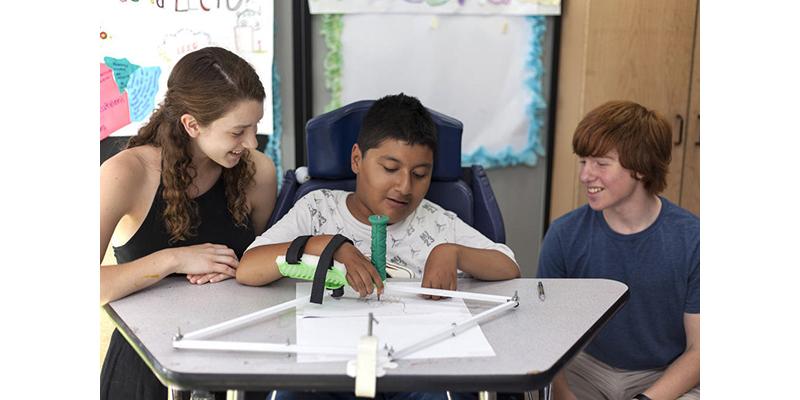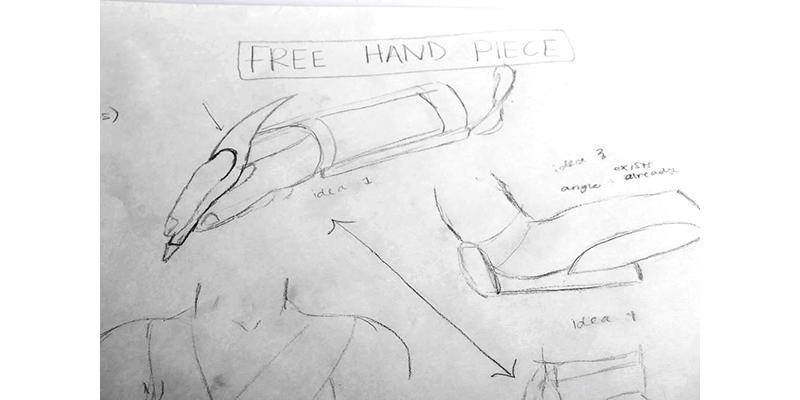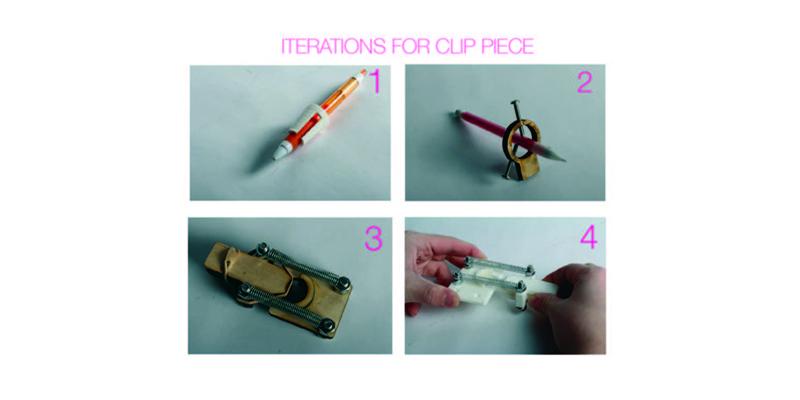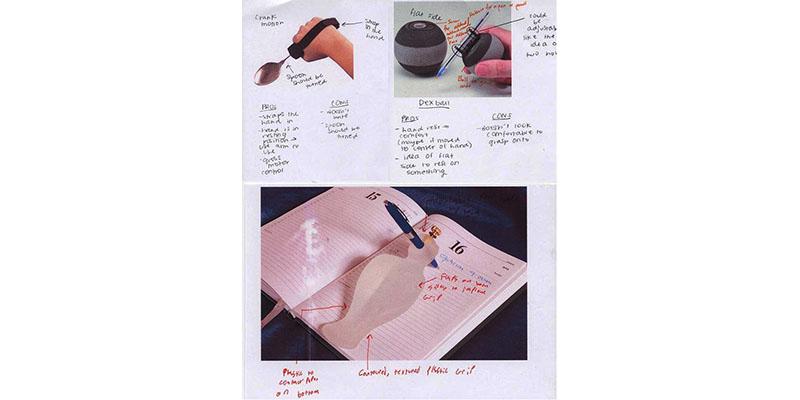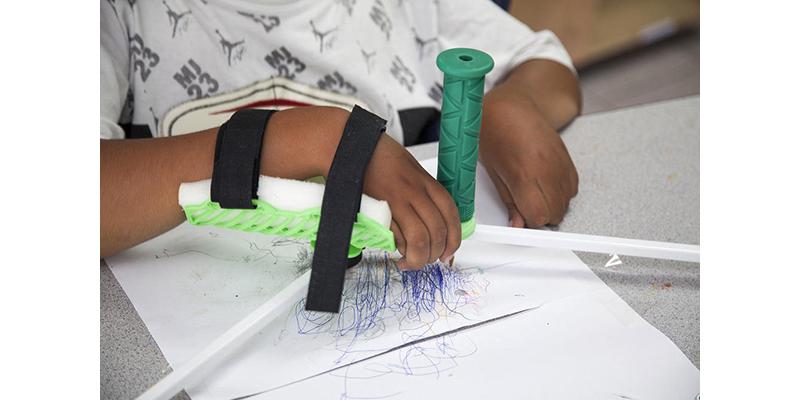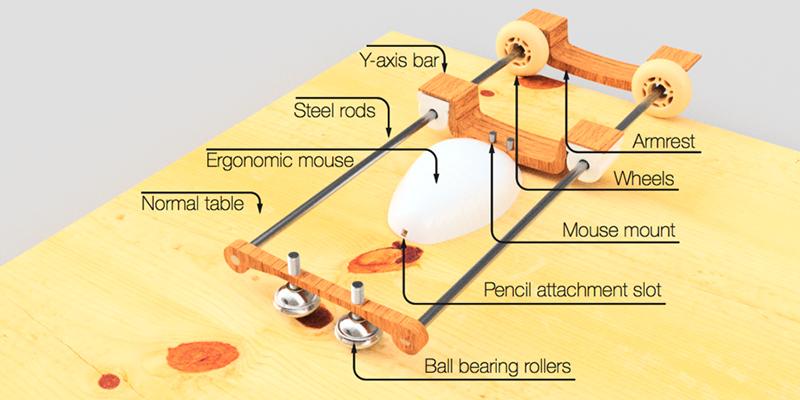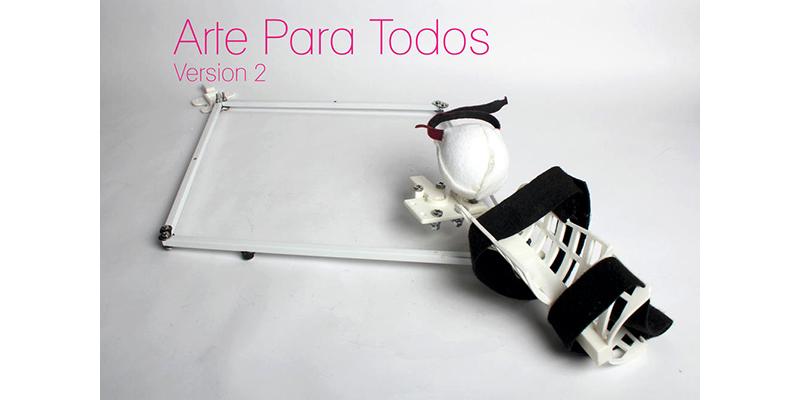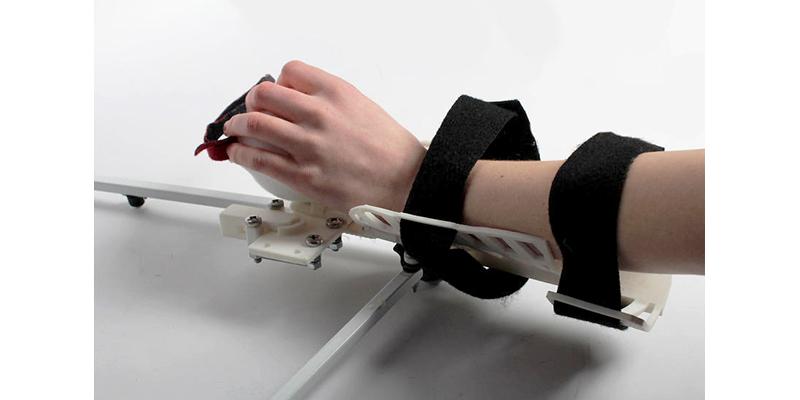Arte Para Todos
School: NuVu: The Innovation School
City/State: Cambridge, MA
Grade(s): 7, 8, 9, 10, 11, 12
Format(s): Device
Subject(s): Health and Wellness, Mathematics, Science and Technology
Project Overview
NuVu students Seth Isaacson, Joshua Brancazio, Oliver Geller and Alea Laidlaw participated in the Easing Cerebral Palsy Design Studio, a two-week session focused on designing products that ease the lives of children with Cerebral Palsy and their caregivers. Like the (link to this project) Mobility Device, this studio partnered with Mas Libertad Menos Barreras, an organization in Monterrey, Mexico, that provides special devices to low-income families of children with Cerebral Palsy.
As the students learned, people with cerebral palsy often struggle with drawing and writing due to constant muscle tension that limits their fine motor skills. This barrier inhibits the art making process for many people who wish to express themselves through visual arts media. To address this need, this NuVu team aimed to create “an assistive drawing and writing tool that [would give] people with cerebral palsy the freedom to express themselves through artistic creation.” They also aimed to create an assistive tool to aid people without cerebral palsy, whose fine motor skills are limited; hence the name, Arte Para Todos – “Art for All.”
In order to address variable levels of gross and fine motor control the team decided to create an arm brace device that engaged more of the upper body instead of just the hand, providing resistance to involuntary motions. An additional reason for this design choice was its therapeutic benefit in stretching out tense muscles—an issue that is pronounced in extreme cases of cerebral palsy.
Students began the design process for the tracking system and hand piece with a two axis sliding system, for two-directional motion. As they iterated the tracking system, they took cues from architectural drawing boards and the natural position of the arm while drawing. They eventually decided to use a four-armed mechanism with adjustable resistance. Likewise, students developed the hand piece design through multiple stages and tests. In order to increase user comfort, students opted to use a 3D printer to create a customizable brace.
At NuVu, an innovation school in Cambridge, MA, middle and high school students learn in an open and flexible space that is more akin to an architecture studio than a classroom. Some students attend NuVu for a two-week intensive and for others it is their full time high school.
Instead of one-hour classes and separate subjects, students engage in solving a problem through multi-disciplinary learning, all day, for two weeks. Groups of twelve students collaborate on the creative process, with expert guidance from two coaches who have expertise in a related field. Throughout the process students conduct precedent research, engage in brainstorming, render drafts of their ideas, create prototypes and write and reflect on their findings and processes. Their work is captured in a portfolio along with documentation of the final products they debut at the end of each studio session. These portfolios are publically viewable on NuVu’s website.
How This Project Can Be Useful
- Highlights a wonderful way to engage students in work that makes the world a better place.
- Beautiful example of students planning a solution pathway to solve a real life challenge.
- Excellent example of how a real life problem challenges students academically and creatively
- Models a product which could be easily reproduced due to its practical usefulness and professional quality
- High-quality example of students drafting, assessing, revising, and collaborating with peers to create an important product
- Successful use of outside experts to guide students work
- Compelling field work to engage and motivate students
